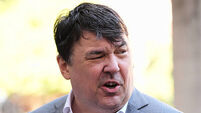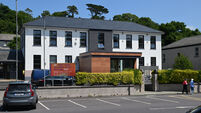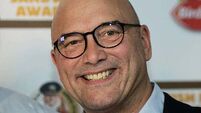A place that tells you who you are

The terraces and laneways of Blackpool and Farranree, of St Luke’s and Dublin Hill, have produced iconic soccer players and champion boxers in their time, basketball dynasties and rugby icons, but the hurlers of the northside, are first among equals. Primus inter pares.
You can ask novelist and broadcaster Christy Kenneally.
Though he grew up in what he calls the most religious address in Ireland (“6 Convent Place, St. Mary’s Road, off Redemption Road,”) Kenneally acknowledges there were always competing faiths. Different objectives.
“The ambition of every young fella around our place was to go to the Mon, to play hurling for the Mon and then to graduate to Glen Rovers. The county was largely football, which to us was a game you played to keep you warm for hurling. We played hurling on the road and on the lane. It was the game we played naturally; there were two boys in the house but we had 16 hurleys on the premises. Now, after a match they doubled as rifles in a game of cowboys, so they were also pretty economical.”
His neighbour, poet and novelist Theo Dorgan recalls the dynamic of the rivalries: “My dad was one of the five guys who founded Na Piarsaigh, and my brother Jack is still involved: he’s our link to the club.
“When I was growing up, during the season you wouldn’t give the time of day to someone from the Glen, even if you were sitting next to him in school. As for someone from the Barr’s . . . anyone from south of the river was deeply suspect. You were looking for the cloven hoof, to be honest. But I sometimes see a viciousness among people who choose – for no particular reason – to support different English soccer teams. It can get to a stage among people that you’d leave the pub if they’re there, because you sense it’ll end badly. It’s a desperate search for identity, but with the GAA clubs on the northside, that identity was a given.”
The men who represented that rivalry on the field were a curious mix of neighbour and superstar. Take Kenneally’s uncle. He was Joe around the house, but known nationally as Joe Hartnett: often Christy Ring’s adjutant in inter-county combat.
“That was part of it,” says Kenneally. “These were fellas who worked with your uncle in Ford’s, or who knew your aunt from Dunlop’s. It was the normality – they were people you knew who happened to be great sportsmen. On a Monday night after a championship game my father and grandfather and uncles would gather in my grandfather’s house and there’d be a huge discussion. When people say the GAA is rural, they mean ‘local’.
“The northside and southside of Cork were localities, and it broke down further when the northside split into Glen Rovers and Na Piarsaigh and so on.”
Dorgan agrees about the different groupings.
“It was tribal, but because you knew the people involved, you were part of it. You were part of the story.
“We were on Redemption Road: Na Piarsaigh. You walked down Water Lane and at Madden’s Buildings you were in Glen territory.
“Where, by the way, you passed the house of James Barrie, the only painter to be expelled from the Royal Academy – for exposing corruption among the committee. We went from the local to the universal easily enough.”
And back to the local again with equal ease: Dorgan sees the topography of the area driving the local personality.
“Look at the valley of Blackpool. That was the main artery for trading in the city going back a thousand years, almost – you came in over Dublin Hill, down through Blackpool, through the North Gate Bridge and you were into the city.
“The butter road led down through the northside; the garrisons of English soldiers for generations came in through Cobh and dispersed out north and further into Munster.
“There’s a long-tailed history to the place, with layers of folklore and story being laid down in the valley leading to the city, like a river laying down layers of silt.
“All that led to renewal, to reinvigoration, because you always had new people coming in, whether traders or soldiers or waifs and strays, keeping the place dynamic.”
By contrast, could that focus on your own insular or narrow?
“First, that focus was a sense of local identity,” says Kenneally. “It was a sense of belonging. That could be looked on as insular, but once it got to county level there were no clubs. With the red jersey on, the club didn’t matter. It’s easy to say it was insular, but we were an insular people.”
Dorgan also rebuts the charge of insularity.
“We knew there was a world outside, one we wanted to explore, but there was also stability there. That was great to have.
“A few days ago we buried Seamus Heaney in Bellaghy and the local people felt gratified that he had come home. His wife Marie said his idea of paradise was Bellaghy: that was his epic home.
“Seeing a place or an upbringing as constrictive, as narrow . . . I think that’s a sign of people who don’t have a sense of being from somewhere, because I’d feel the opposite: if you’re solid in your home place, then you can go from there to anywhere.
“I think it’s a very strong grace to have a sense of being from somewhere. I’m 25 years in Dublin, and people often ask me if I miss Cork. I never left Cork. I just live elsewhere.”













